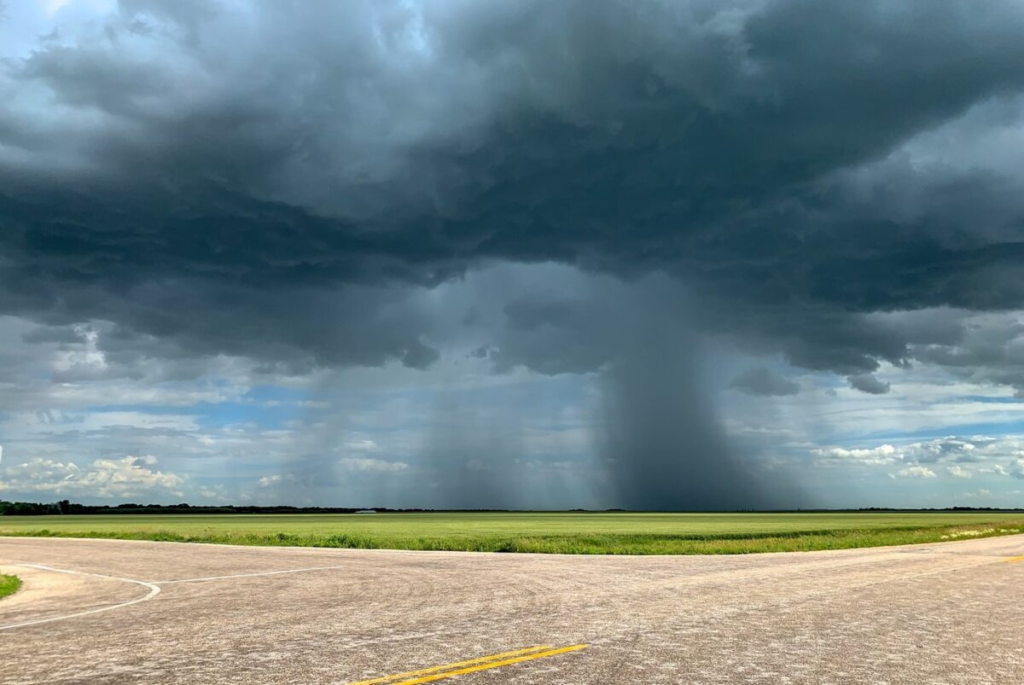The meteorological phenomena of microbursts and windshear, particularly during the final approach phase of flight, can be extremely hazardous, and in the worst cases, fatal for aircraft. Fortunately, technology exists these days to warn pilots in advance of the presence of such events so that avoidance actions can be taken and their effects mitigated.
Regrettably, this has not always been the case. It has taken years of development of specialist systems to reach this point. Notably, it also took one aircraft accident in particular to teach the airline industry about the dangers of microbursts and windshear and start a process to develop the technologies to deal with them more effectively.
Delta Air Lines Flight 191, a Lockheed L-1011 TriStar, crashed following a windshear encounter while on approach to Dallas-Fort Worth Airport (DFW) in Texas on August 2, 1985, killing 134 occupants of the aircraft and one person on the ground, while just 29 people survived the accident.
AeroTime looks at the events surrounding this tragic accident and investigates how modern-day technologies might have prevented such a disaster from occurring.
Microbursts and windshear – what are they?
A microburst is a weather phenomenon that can pose a significant danger to aircraft during take-off and landing, as well as impact on aviation safety in general. A microburst is a sudden, powerful downdraft of air that occurs when a thunderstorm’s updraft reaches its maximum intensity and collapses. As the downdraft hits the ground, it spreads out in every direction, creating a burst of wind that can be incredibly strong and consequently making it difficult for aircraft to be handled with sufficient control.
Wet microbursts, such as that experienced by Delta Flight 191, occur when rain falls through a dry layer of air, causing the rain to evaporate rapidly and cool the air. This cooling effect makes the air denser, and as a result, it sinks rapidly towards the ground, creating a strong downdraft. The strength of the downdraft can be significant, reaching speeds of up to 150 mph.
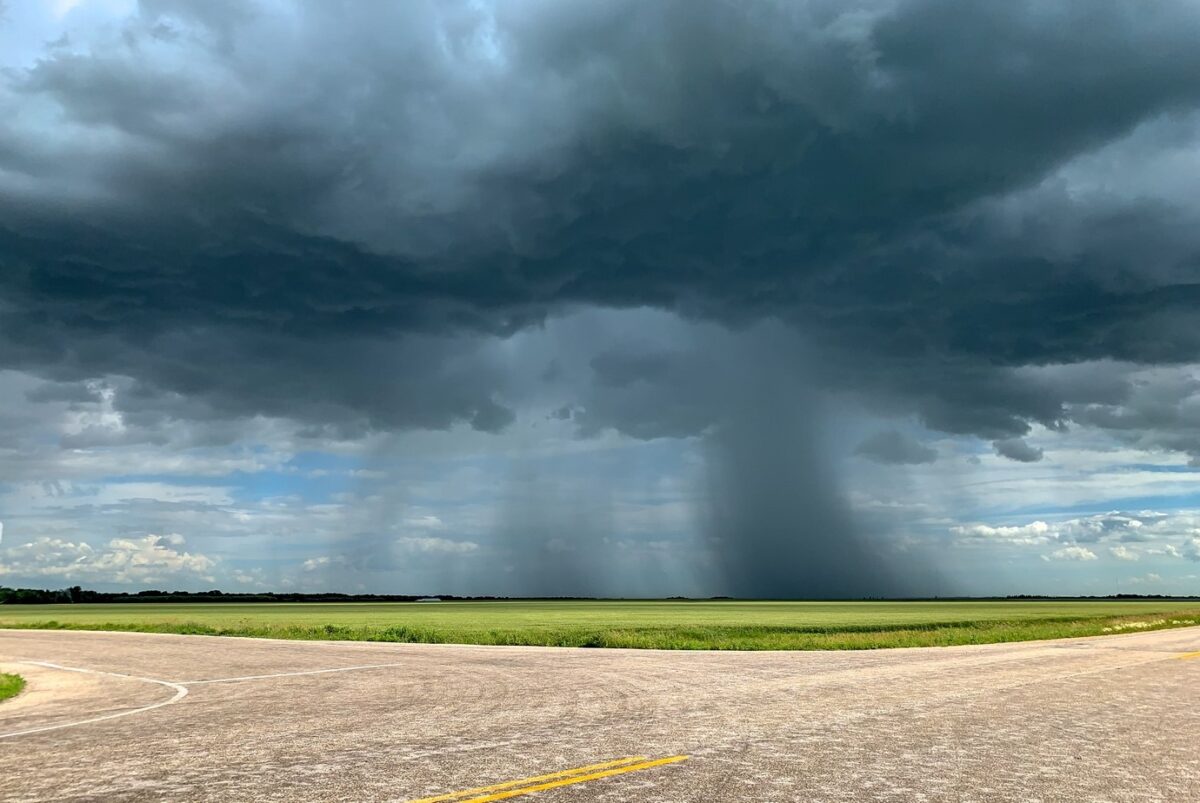
The temperature and humidity of the air influence the formation of wet microbursts. For wet microbursts to form, the air needs to be dry at lower altitudes, and there must be a moist layer of air above it. Wet microbursts are most common in areas with low humidity, such as deserts.
Dry microbursts occur when there is no rain, and a column of sinking air that evaporation has cooled creates the downdraft. This type of microburst is typically more challenging to detect because there are no visible signs of precipitation. The sinking air creates a strong downdraft that can be as powerful as a wet microburst, reaching speeds up to 100 mph.
Dry microbursts are most common in areas with high humidity, where the evaporative cooling effect is more pronounced. They can be particularly dangerous because they are more difficult to detect and predict than wet microbursts.
Windshear, on the other hand, is a rapid, often dangerous, change in wind speed or direction over a short distance, significantly impacting an aircraft’s lift, airspeed, and performance, especially during low-altitude operations like take-off and landing. Nowadays, pilots use weather reports, ground-based detection systems, on-board monitoring, and crew reports to detect wind shear and take immediate action, such as increasing thrust and pitching up, to maintain control and avoid accidents
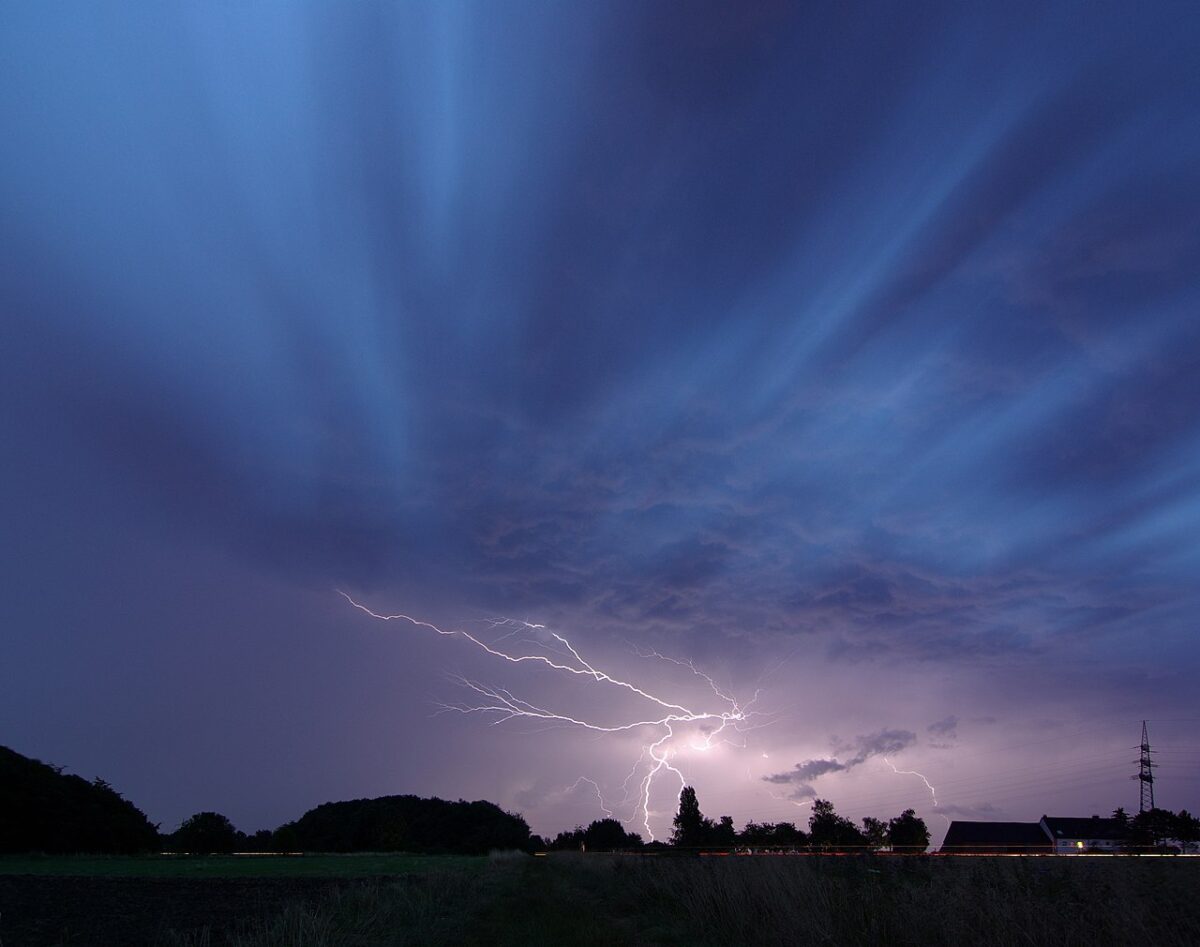
Windshear directly affects an aircraft’s indicated airspeed, which determines the lift generated over the wings. The danger is greatest near the ground during take-off and landing, as an aircraft’s safety margins for aerodynamic stalls are much smaller at these times, with the low altitudes involved in these phases. Windshear can lead to a sudden loss of airspeed, altitude, and control, which requires immediate and correct pilot action.
The background to Delta Air Lines Flight 191
Flight DL191 was a regularly scheduled passenger flight between Fort Lauderdale Airport in Florida (FLL) and Los Angeles, California (LAX), with an intermediate stop at Dallas-Fort Worth International Airport (DFW) in Texas. The flight on August 2, 1985, was being operated by a six-year-old Lockheed Tristar aircraft with registration N726DL. The flight that day had 163 people on board, including 152 passengers, three flight crew, and eight cabin crew.
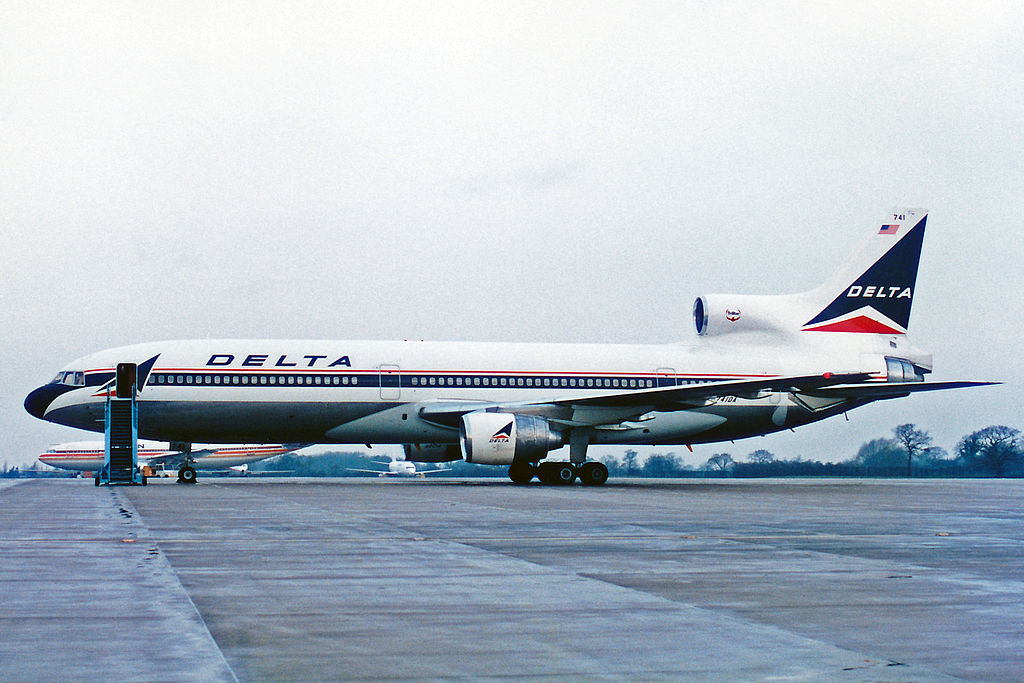
The aircraft departed Fort Lauderdale on a normal instrument flight plan at 15:10 local time. The forecast for Dallas contained in the flight crew’s dispatch documents stated that there was a possibility of widely scattered rain showers and thunderstorms around the time of the flight’s arrival in the area later that afternoon, although the risk of these was due to decrease into the evening.
A normal scheduled flight – initially
According to Aviation Safety Network, the flight was uneventful until passing over New Orleans, Louisiana. A line of weather along the Texas-Louisiana Gulf Coast had intensified. Because of this, the crew of Flight 191 decided to alter their route of flight to the more northerly Blue Ridge arrival route into Dallas to avoid the developing weather to the south.
This change necessitated the flight to enter a 10 to 15-minute holding pattern at the Texarkana beacon north of Dallas to allow for approach sequencing at the airport itself.
At 17:35 local time, the flight crew received the latest weather broadcast for Dallas-Fort Worth Airport, which advised of clouds at 6,000ft. It also advised of good visibility, high temperatures (101 degrees Fahrenheit), and calm winds at the airfield.
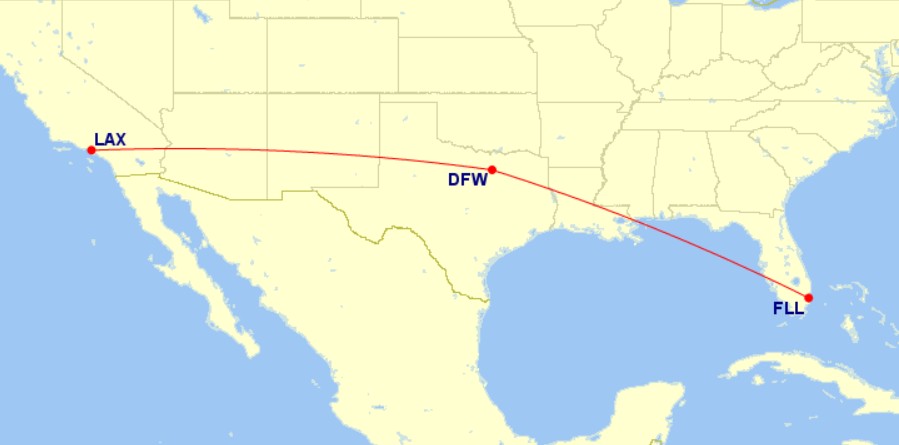
Upon receipt of this information, flight 191 was subsequently cleared by Dallas area controllers (ATC) to head to the Blue Ridge beacon and begin its descent. At 17:43, air traffic control cleared flight 191 to descend to 10,000 feet and turn onto a heading of 250 degrees to clear of incoming weather systems, including possible thunderstorm activity.
The captain replied that he was looking at a “pretty good-sized” weather cell and advised that he would rather not go through it and would prefer to deviate around it. The controller acknowledged this request and issued an alternative heading for Flight 191 to follow towards Dallas Airport.
The weather deteriorates
At 17:46, ATC cleared Flight 191 direct to Blue Ridge and to descend to 9,000 feet. The crew of flight 191 acknowledged receipt of the clearance. At 17:48, the captain told the first officer (who was flying the aircraft for this leg of the trip), “You’re in good shape. I am glad we did not have to go through that mess. I thought for sure he was going to send us through it.” Three minutes later, the flight engineer said, “Looks like it’s raining over Fort Worth.”
At 17:51, ATC instructed flight 191 to contact DFW Airport Approach Control. At 17:56, the regional approach controller transmitted an all-aircraft message, which was received by Flight 191. The message stated, “Attention, all aircraft listening… there’s a little rain shower just north of the airport and they’re starting to make ILS approaches”, indicating that the weather was deteriorating at the airport and on the approach to the active runway, 17L. At 17:59, the first officer stated, “We’re gonna get our airplane washed.”
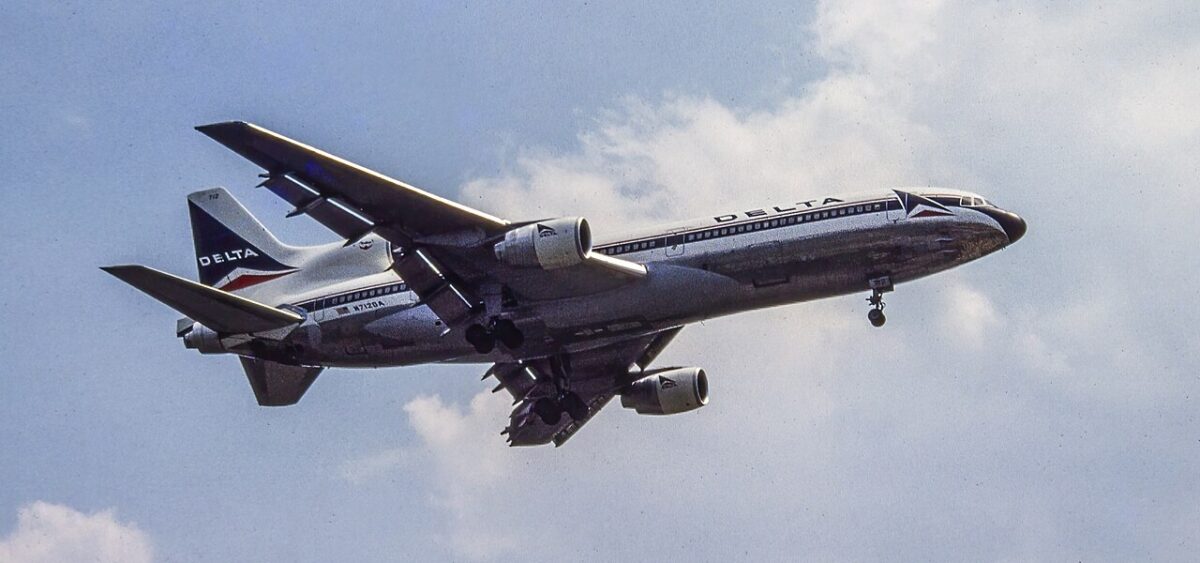
At 18:00, the approach controller asked American Airlines flight 351 (which was two aircraft ahead of flight 191 in the landing sequence) if it was able to see the airport. Flight 351 replied, “As soon as we break out of this rain shower, we will.” The controller then told flight 351 that it was four miles out and cleared for the approach to runway 17L.
At 18:00, the approach controller asked Flight 191 to reduce its airspeed to 170 knots and to turn left to 270 degrees, with Flight 191 then acknowledging receipt of the clearance. Flight 191 had been sequenced behind a Learjet 25 for landing on runway 17L. At 18:02, the approach controller told Flight 191 that it was six miles from the outer marker and stated, “Cleared for ILS one seven left approach.” The flight acknowledged receipt of the transmission.
The approach phase of flight 191
At 18:03:03, the approach controller requested Flight 191 to reduce its speed to 160 knots, to which the captain replied, “Be glad to.” The controller followed this request up a few seconds later with, “And we’re getting some variable winds out there due to a shower out there, north end of DFW.” This transmission was received by Flight 191
At 18:03, the approach controller requested Flight 191 to slow to 150 knots and to contact the Dallas tower controller for landing clearance. At 18:03:58, the captain, after switching to the tower’s radio frequency, stated, “Tower, Delta one ninety one heavy, out here in the rain, feels good.”
The tower cleared the flight to land and relayed the latest wind speed at the airport. At 18:04:07, the first officer called for the before-landing check. The flight crew confirmed that the landing gear was down and that the flaps were extended to their landing position.
On final approach into Dallas
Just three miles (4.8 km) ahead of Flight 191, the Learjet was making its final approach to runway 17L. While on final approach, the Learjet flew through the storm north of the airport and encountered what was later described as “light to moderate turbulence.” The Learjet encountered heavy rain and lost all forward visibility but was able to continue its approach and land safely.
When later asked why he did not report weather conditions to the tower, the Learjet’s captain testified that he had nothing to report because “the only thing that we encountered was the heavy rain.”
At 18:04, the first officer exclaimed to his colleagues that there was “lightning coming out of that one, right ahead of us.” Flight 191 continued descending along the final approach course.
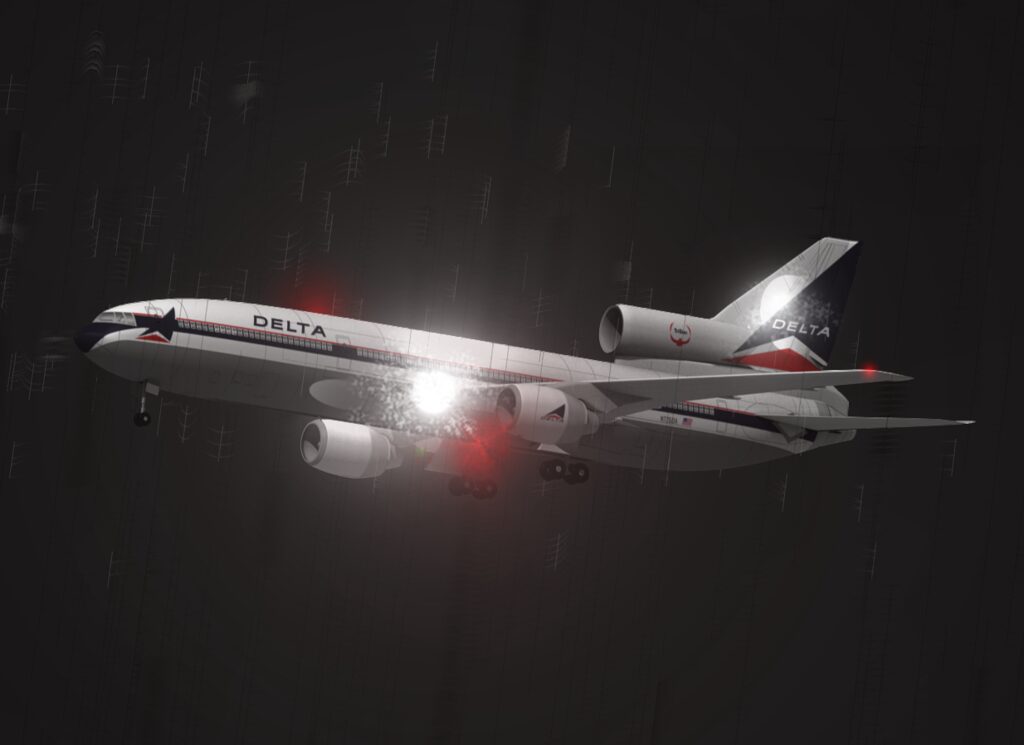
At 18:05:05, the captain called out “1,000 feet.” At 18:05:19, the captain cautioned the first officer to watch his indicated airspeed, and a sound identified as heavy rain began to strike the aircraft. The captain then warned the first officer, “You’re gonna lose it all of a sudden, there it is.” The captain stated, “Push it up, push it way up.”
At 18:05:29, the sound of engines at high power was heard on the cockpit voice recorder (CVR), and the captain said, “That’s it.” From this point, the aircraft began a descent from which it never recovered. The plane’s angle of attack was over 30° and began to vary wildly over the next few seconds. The pitch angle began to sink, and the aircraft started descending below the glideslope at this point.
At 18:05:44, the aircraft’s Ground Proximity Warning System (GPWS) enunciated a “Whoop whoop – pull up” alert, and the captain commanded “TOGA” – an industry-recognised command to apply full engine power and abort the landing attempt. The CVR recording suddenly ended at 18:05:58.
The impact and subsequent fire
Witnesses on the nearby State Highway 114 north of the airport saw Flight 191 emerge from the rain about one mile from the end of runway 17L. The airplane touched down heavily in a field short of the runway and briefly became airborne again before striking a car in the westbound lane of State Highway 114. The driver was killed instantly.
After the plane struck the car and a light pole on the highway, other witnesses saw fire on the left side of the airplane in the vicinity of the wing root. The witnesses generally agreed that the airplane struck the ground in a left-wing-low attitude, and that the fuselage rotated counterclockwise and broke into several sections after the left wing and cockpit area struck a water tank on the airport site.
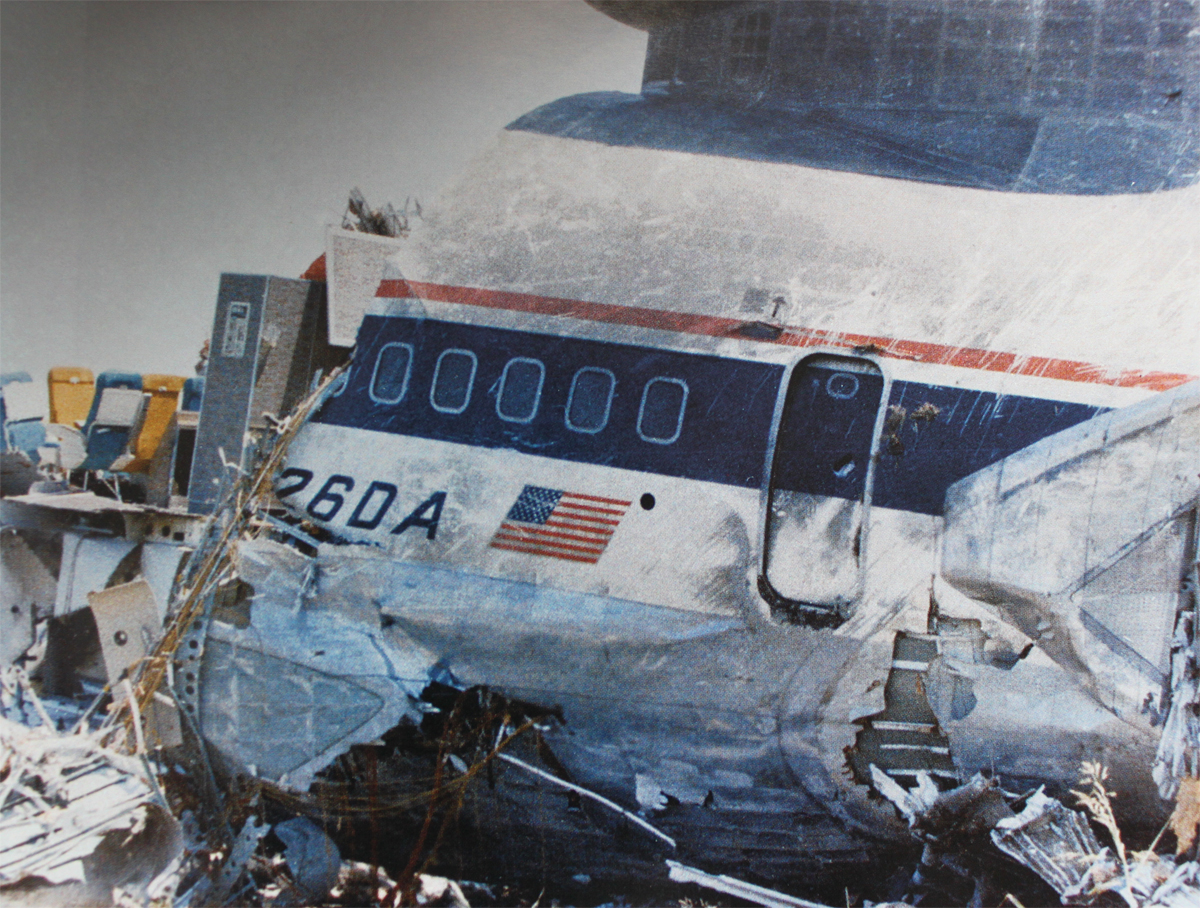
A large explosion obscured the witnesses’ view before the aircraft’s tail section emerged from the fireball, skidding backwards. The tail section finally came to rest on its left side with the empennage pointing south and was subsequently blown to an upright position by wind gusts.
With the aircraft shattered into several pieces and most of the wreckage on fire due to the egress of fuel that had leaked and ignited, the airport fire and emergency units were en route to the accident site within one minute of the crash. Forty-five seconds after first being alerted, three fire trucks from the airport’s fire station arrived at the crash and began fighting the fire.
Additional units from fire stations arrived within five minutes, and despite high wind gusts and heavy rain, the fire was mostly under control within ten minutes after the alert was sounded.
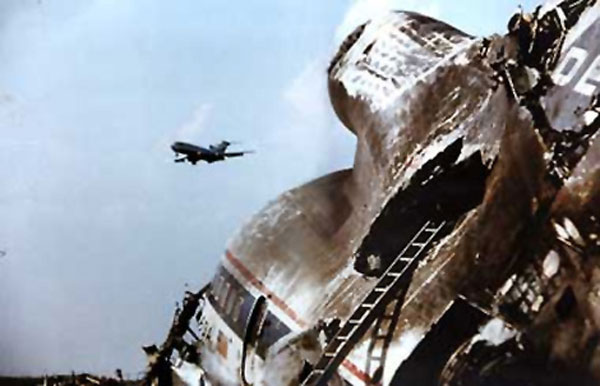
The investigation’s findings
In all, 134 passengers and crew on board the airplane, and the driver of the car, which was struck by the airplane, were killed in the accident. Meanwhile, 27 people on board the airplane and a single rescue worker at the accident site were injured. Miraculously, two passengers on the airplane were uninjured.
A lengthy investigation was carried out by the National Transportation Safety Bureau (NTSB), which eventually published its report of findings on the loss of Flight 191 a year after the accident, in August 1986.
In the report, the NTSB concluded that the probable cause of the accident was caused by the flight crew’s decision to initiate and continue the approach into a cumulonimbus cloud, which they observed to contain visible lightning. Additionally, there was a general lack of specific guidelines, procedures, and training provided by Delta to its crews for avoiding and escaping from low-level windshear events, paired with a lack of definitive, real-time windshear hazard information on the day of the accident itself.
To quote the report, “This resulted in the aircraft’s encounter at low altitude with a microburst-induced, severe windshear from a rapidly developing thunderstorm located on the final approach course.”
Further research into windshear and microbursts
Following the conclusion of the investigation, researchers at NASA’s Langley Research Center modified a Boeing 737-100 testbed to fly a series of trials featuring a newly developed Doppler weather radar system. The airborne windshear detection and alerting system developed by NASA in the aftermath of Delta flight 191 was later installed in all commercial airliners in the US after the Federal Aviation Administration (FAA) mandated that all such aircraft must have on-board wind shear-detection systems installed.
To avoid the dangers of microbursts and other extreme weather events, pilots are now trained to rely on weather radar and visual cues to detect potential areas of turbulence and avoid flying through them. Additionally, pilots are trained to avoid areas with thunderstorms and look for visual cues such as cumulonimbus clouds and lightning that may indicate the presence of microbursts.
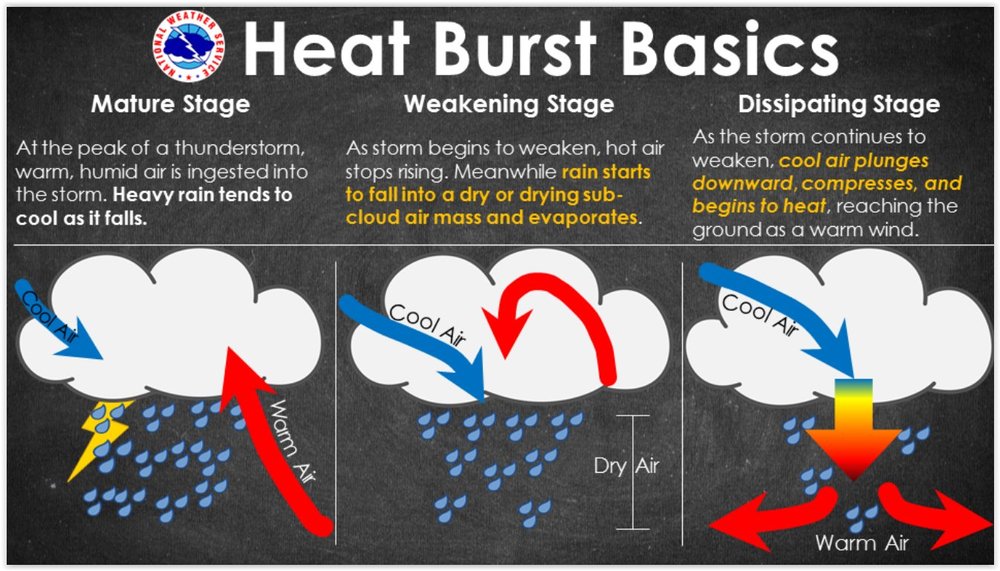
Thanks to the work by NASA in the 1980s, advanced weather radar systems and onboard weather monitoring technologies now help pilots detect potential microbursts. Despite these aids, should they find themselves in a microburst situation, pilots are trained to react by increasing engine power, adjusting their flight path, and taking other evasive maneuvers to avoid the strong downdrafts involved. Pilots need to receive proper training on microbursts to ensure they can react appropriately and safely in such a situation.
If a microburst is encountered during the landing phase, pilots are trained to understand that the safest procedure is to immediately abort the landing by performing a missed approach or “go-around”, as was attempted by the crew of Delta Flight 191, albeit too late.


